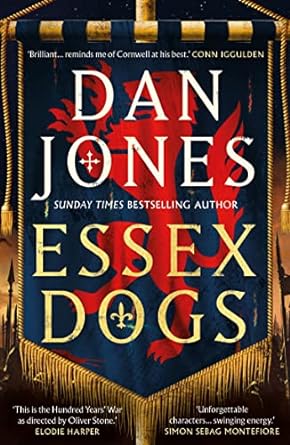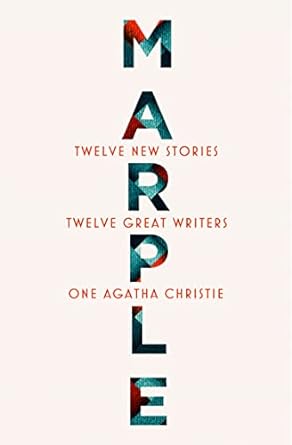“Some men fight for glory. Others fight for coin. The Essex Dogs? They fight for each other.”
Our book group choice for February was Dan Jones’s Essex Dogs. This is his debut historical novel, and the first of a trilogy.
‘Set during the 100 Years War, with King Edward and his armies marching through France, this is a tale of medieval warfare and of camaraderie. The Essex Dogs are a tight knit group of ten men, individuals who will fight to keep each other alive, and will fight to see their homeland again…’
A slightly smaller group met to discuss Essex Dogs, with the majority of the group really enjoying it. One member felt that it had taken a while to get going, but this opinion wasn’t shared! The book did remind our readers of offerings from Bernard Cornwell and Conn Iggulden – they expected epic battles set in a real historic period, which is exactly what the book delivered. Several of our group admitted that they had ended up using google to find out more about the neverending series of battles in the book. The setting felt authentic, although some of the depictions were possibly overly graphic – less the fighting, more the unwashed Essex Dogs and their bodily functions…. It was commented that at least the book didn’t come in a ‘smell-o-vision’ format!
The friendship bond between the Dogs was commented on, and the standout characters of Loveday, Romford, Millstone, Pismire, Scotsman, and the Father were well written. Loveday FitzTalbot was the de factor leader – a mercenary with a conscience – and determined to keep his group together. The priest, Father, was quite unnerving, and a group member commented that they were glad when something happened to him. Romford at first seemed a bit unlikely as a London archer with a drug habit – but then we decided that drug addiction had probably always been part of life and the 100 Years War would have been no different.

The characters seemed so sympathetic that you would forget that a few pages previously they were burning down a French village, as you read about their blistered feet or lack of food, then suddenly you would be back in the thick of battle. The changes from the mundanity of their everyday life to the extreme violence was jarring, but probably accurate.
The Black Prince, portrayed as a spoilt brat who drinks too much, takes drugs, and gets on the nerves of his warriors seems implausible given that he went on to become an effective war leader. However this legend could have been created by all the knights, soldiers and mercenaries he had at his beck and call. Certainly the King himself rarely made an appearance, despite the many battles in his name. It was quite interesting reading about the fictional version of the Earl of Warwick, local to SWFT, as his character didn’t seem to differ much from the historical version.
Slight spoiler alert: The ending at Crécy was felt to be a bit of anti-climactic, however the next book, Wolves of Winter, has already been published, and this should tie up some of the loose ends – who was that mysterious woman that Loveday (inadvertently) gave his knife to, and was the sighting of mysterious and legendary figure of Captain real or a hallucination brought on by the heat of battle?.

Marple: 12 New Stories
‘Reading a perfectly plotted Agatha Christie is like crunching into a perfect apple: that pure, crisp, absolute satisfaction.’ – Tana French
March’s book group choice is Marple: 12 New Stories. This collection of short stories, all featuring the indomitable Miss Jane Marple, were written as tribute to the late Queen of Crime. Penned by such famous authors as Val McDermid, Elly Griffiths, and Kate Mosse, it is less a ‘whodunnit’ and more a ‘whydidnttheydothissooner’?.
‘Each author captures Christie ― and Marple ― perfectly, while also displaying just a bit of her own unique touch’ – The Washington Post
